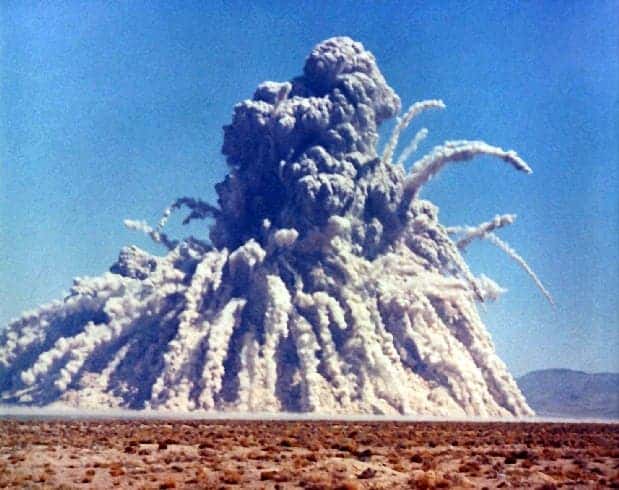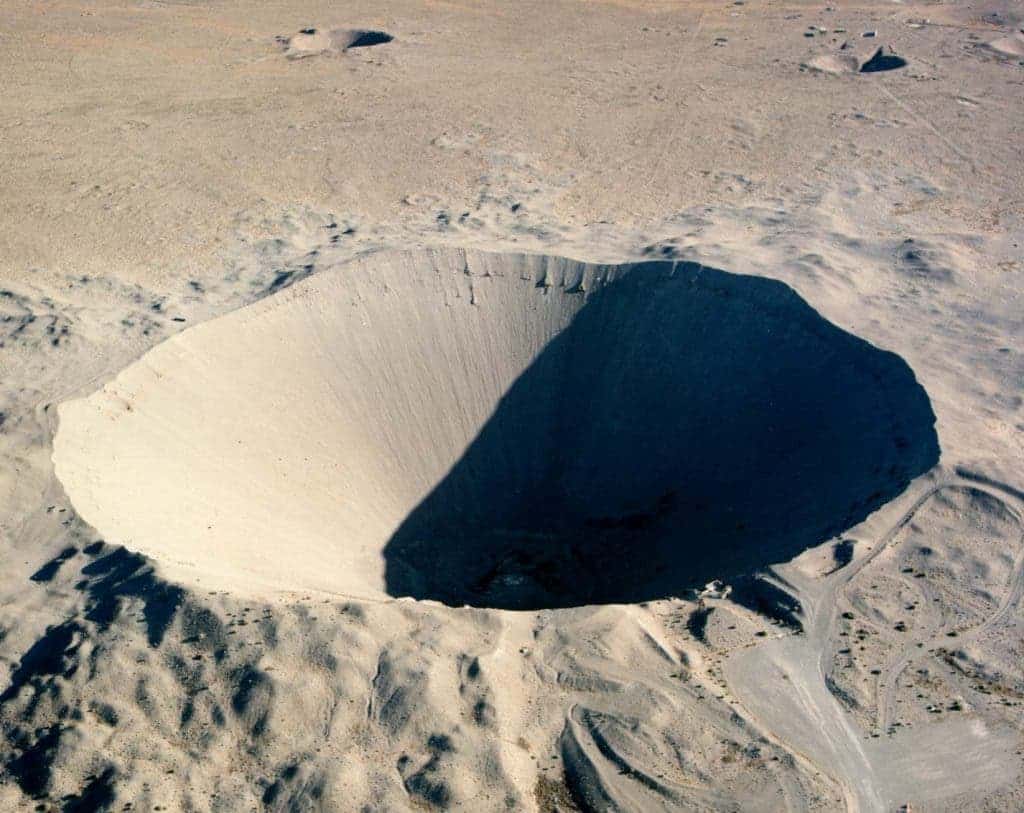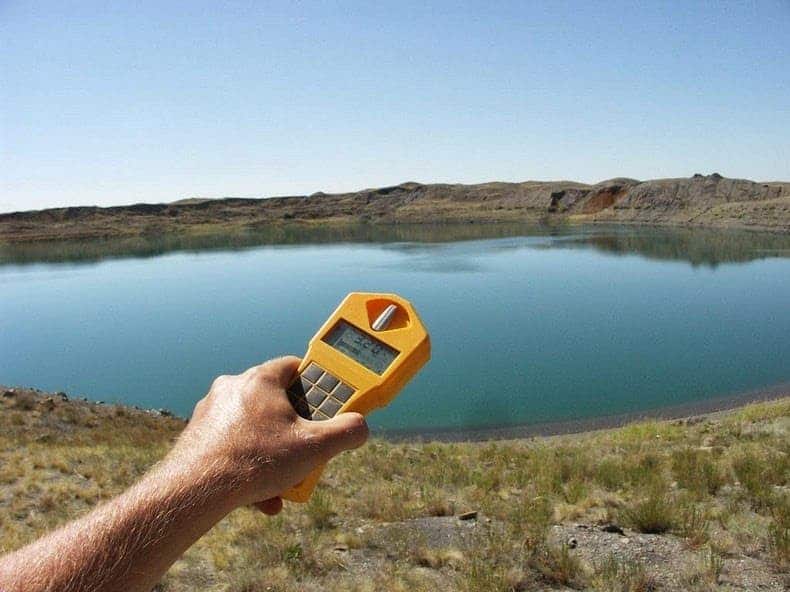One this day, 53 years ago, the Lawrence Livermore National Laboratory detonated a thermonuclear device 194 meters below the Nevada desert. Why? Well, the government at the time thought blowing up a nuclear bomb underground sounded like a good idea if you want to excavate a mine. It’s a lot quicker than drilling with a lot machines. After all, mines are made using thousands of tonnes of dynamite. Why not take a shortcut and nuke the damn thing. The problem, of course is radiation. But how can you have people work in a mine if it’s contaminated with radiation, right? The logic escapes me as well.

The “Storax Sedan” operatin, part of the Operation Plowshare programme to investigate the use of nuclear weapons for peaceful purposes, caused more radioactive fallout contamination than any other nuclear explosion conducted in the United States (there have been over 1,000). The blast released roughly 880,000 curies of Iodine 131 into the atmosphere. Authorities detected radiation high in parts of Iowa, Nebraska, South Dakota and Illinois, exposing millions of people to radioactive fallout. According to Killing Our Own: The Disaster of America’s Experience with Atomic Radiation by Harvey Wasserman and Norman Solomon, radionuclides spread thousands of miles from the test site were linked to a sudden spike of leukaemia cases.
As an added bonus, the Sedan 104-kiloton blast created a crater 390 meters in diameter and 100 meters deep.

When the US jumped into the well, the USSR wasn’t too far behind. On 15 January 1965 a thermonuclear device was used to create an artificial reservoir in Kazakhstan, Lake Balapan. The waters are lethally radioactive to this day. No fish swim in the lake, nor do other animals or birds live along its shore. The lake regularly emits a foul odor, and there is also growing evidence that the Lake’s water is seeping into the nearby Irtysh River, which flows into Siberia and into the Kara Sea, which then would flow into the Arctic Ocean.

While the United States conducted twenty seven tests before understanding it was a not a good idea and dismissed the program in 1977, the Soviets was persistent right up to 1989. The Soviet version of Operation Plowshare included 156 nuclear tests.
Was this helpful?



